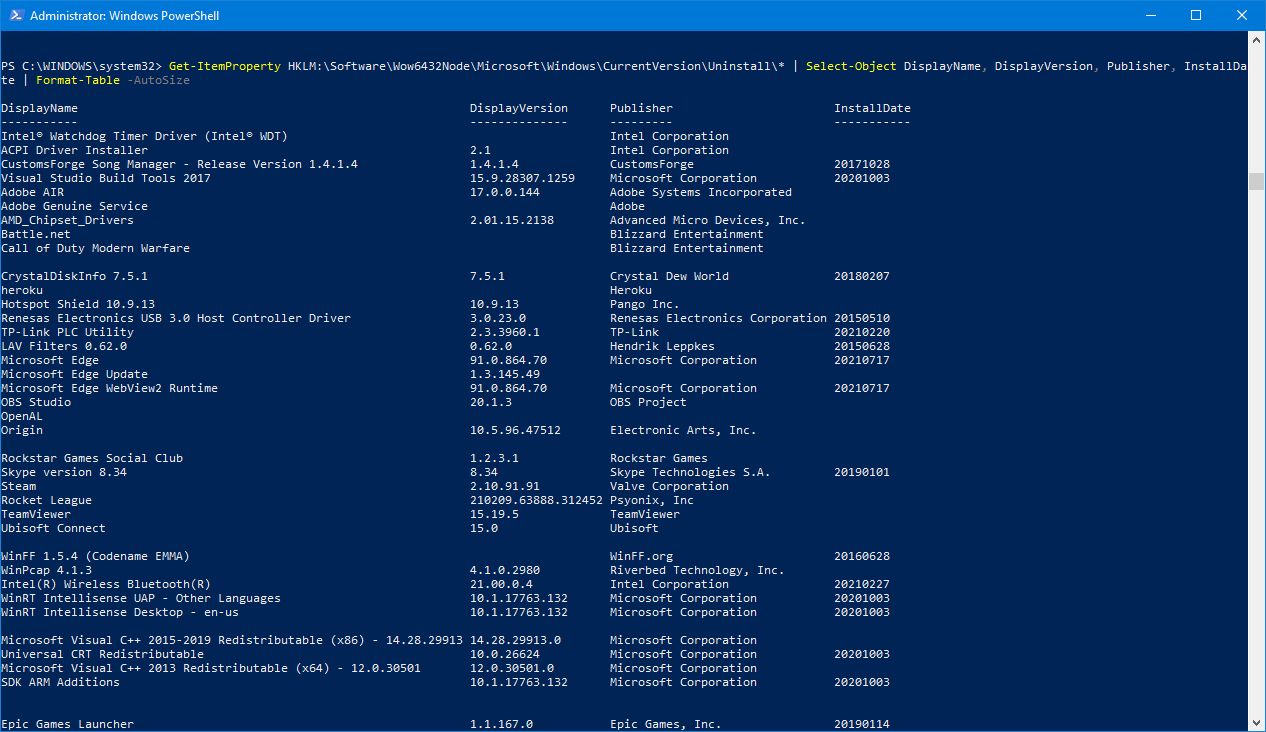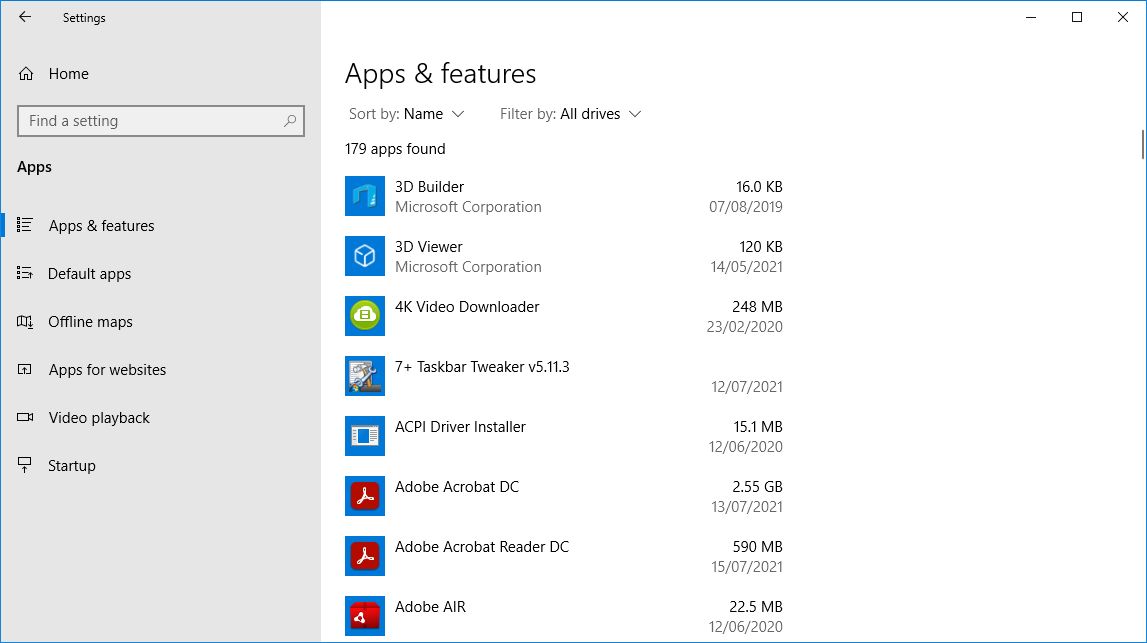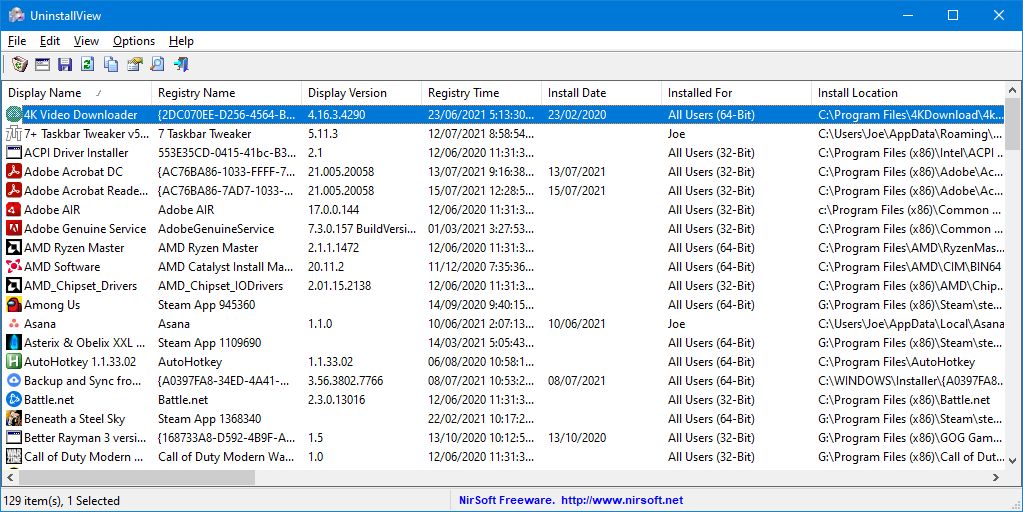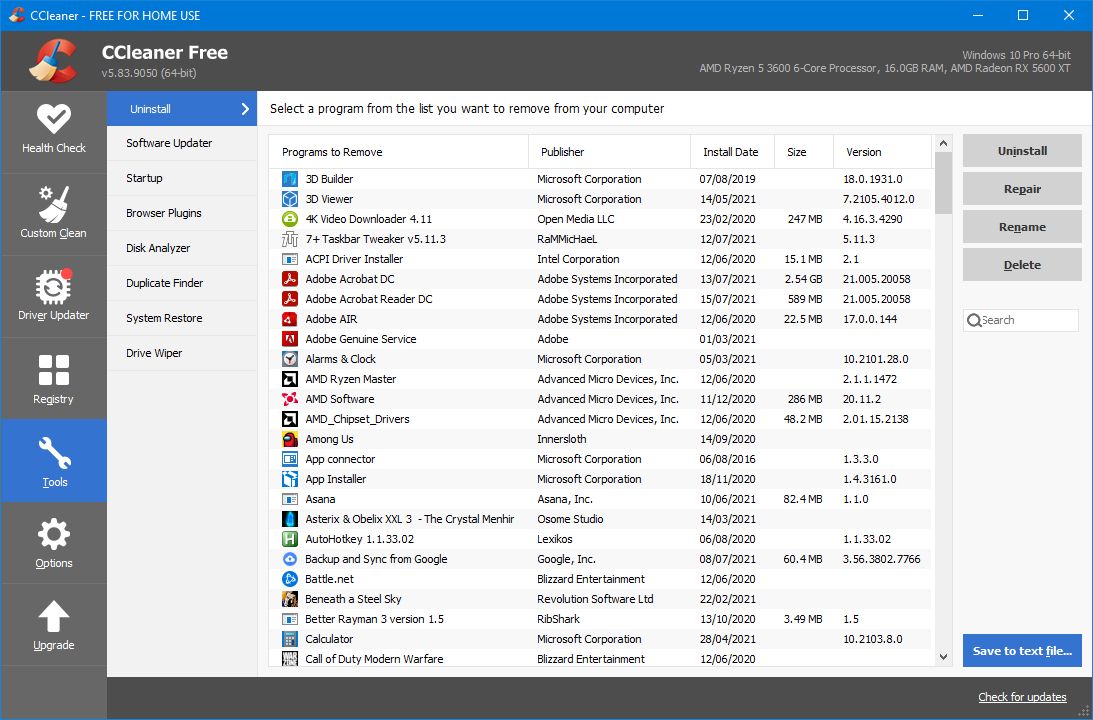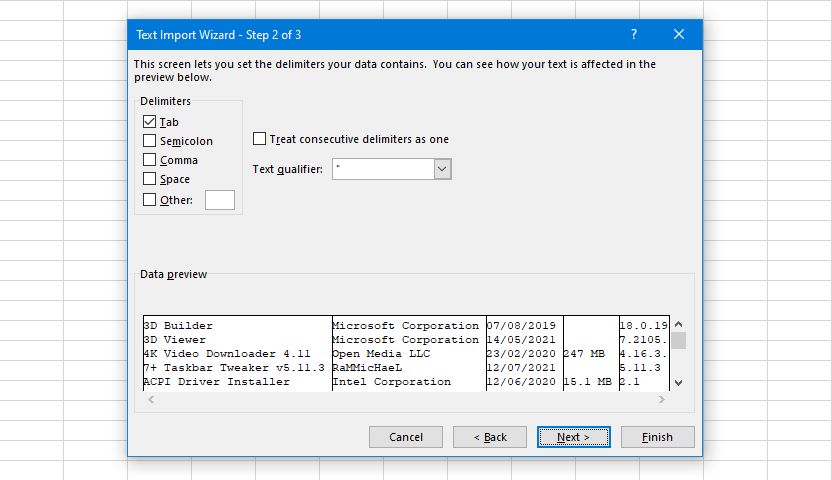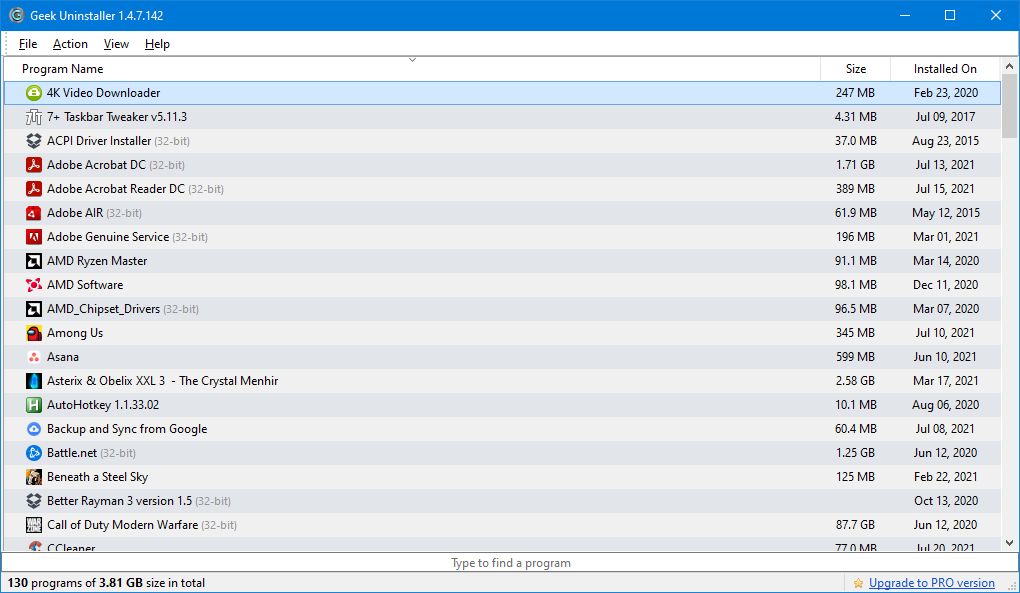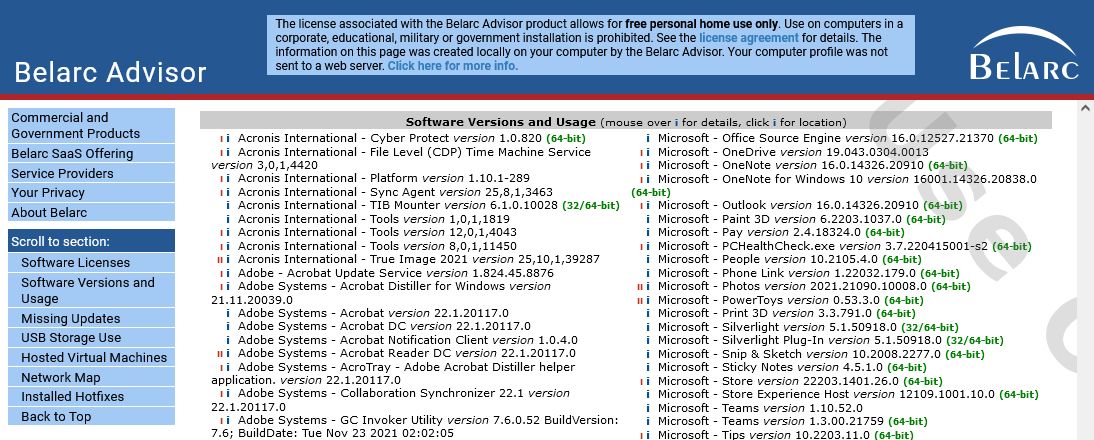You've probably installed many programs on your Windows PC over the years, but you might not remember all of them.
That's why it's handy to know how to get a list of the software installed on your PC. It's also helpful if you're moving to a new machine and want to keep the same programs, or if you quickly want to see which apps you need to prune to free up space.
Let's look at multiple ways to get a list of installed programs in Windows 10 and Windows 11 using a combination of Windows tools and third-party programs.
1. List Installed Programs Using Registry and PowerShell
Querying the registry is an effective way of finding out all installed programs in Windows 10 and Windows 11. You can use a combination of the registry and PowerShell (a task automation tool) to get a list of installed software.
To begin, do a system search for Windows PowerShell. Then, right-click the result and choose Run as administrator.
It's likely that your computer has a policy enabled to stop you from running scripts, so let's change that.
Input the following:
Set-ExecutionPolicy Unrestricted
Press A to select Yes to All. Once you've finished these instructions, you may wish to repeat this step and press N to return to the default state.
Next, input the following, which comes courtesy of a Microsoft scripting blog:
Get-ItemProperty HKLM:\Software\Wow6432Node\Microsoft\Windows\CurrentVersion\Uninstall\* | Select-Object DisplayName, DisplayVersion, Publisher, InstallDate | Format-Table -AutoSize
Press Enter to execute the command.
This command will then output a list of programs installed on your local machine, along with its version number, publisher, and date of installation (if available).
You can click and drag to highlight the list, then Ctrl + C to copy it elsewhere, like Notepad or Excel, to save the list.
2. List Installed Programs Using Settings
Press Windows key + I to open Settings and click Apps > Apps & features. Doing so will list all programs installed on your computer, along with the Windows Store apps that came pre-installed.
Use your Print Screen key to capture the list and paste the screenshot into another program like Paint. You will probably need to scroll down and take multiple screenshots. If this is the case, you might find it easier to paste each image into a word processor and save it as a single file.
3. List Installed Programs Using UninstallView
UninstallView is a program from NirSoft. While you can use it to uninstall programs, it's also incredibly good at generating a reliable list of your installed programs.
Once downloaded, open the executable, and it will show a list of your programs. Use the Options dropdown to toggle the appearance of Windows Apps if you want them included.
Go to View > HTML Report - All Items to see an HTML export of the list. You can keep that file in the default location as per the address bar, or press Ctrl + S to save it somewhere else.
4. List Installed Programs Using CCleaner
CCleaner is a Windows program designed to free up space on your PC, though CCleaner has a questionable reputation nowadays. Nevertheless, it's handy for a single use to generate a list of installed programs on your PC; you can then save that software list to a text file.
Once installed, open CCleaner, and click Tools on the left menu. Click the blue Save to text file button in the lower-right corner. On the Save As dialog box, navigate to the folder where you want to save the installed programs list, enter a File name, and click Save.
The list of installed programs includes the company, date installed, size, and version number for each program.
The text is tab-delimited, which makes it somewhat hard to read in a text editor. However, you can import the text from this file into Excel to make it easier to read.
Convert Your List of Programs Into an Excel Worksheet
Open Excel and go to File > Open > Browse and change the dropdown next to File name to All files. Then navigate to where you exported the text file and open it.
On the first screen of the Text Import Wizard dialog box, make sure to select Delimited under Choose the file type that best describes your data. Click Next.
On the second screen, make sure Tab is checked under Delimiters.
Click Finish. Your list of programs is then imported into columns on a worksheet in Excel.
5. List Installed Programs Using Geek Uninstaller
Geek Uninstaller is a free, portable Windows program used to uninstall all unused programs thoroughly. The program will also forcefully remove stubborn or broken programs. In addition, you can use Geek Uninstaller to generate and save a list of installed programs on your PC.
Open the downloaded executable—a list of installed programs will display on the Geek Uninstaller main window.
To save this list to an HTML file, press Ctrl + S. Then, on the Save As dialog box, navigate to the folder where you want to save the installed programs list, enter a File name, and click Save.
The HTML file automatically opens in the default browser once you save it. The list includes the name and size of each program and the program's installation date.
Geek Uninstaller also allows you to display a list of apps installed from the Windows Store. Go to View > Windows Store Apps. Note that this is a separate list from the other one; it does not combine them. You can export this list to an HTML file the same way you did for the list of regular Windows programs.
And while you're using Geek Uninstaller, you should consider uninstalling unnecessary Windows programs and apps.
6. List Installed Programs Using Belarc Advisor
A final program you can use to list all your installed programs on Windows 10 or 11 is Belarc Advisor. This utility is free for personal use. It scans your system and produces a report on your hardware and software.
Once you've installed and run Belarc Advisor, it will generate the report and open it in your web browser. Scroll to the Software Versions and Usage section.
Here you'll find a list of all the software on your system, alongside its version number. Hover the i symbol next to each line to see more information, like the file size of the program. You can also click this to see the folder and file structure of the program. Additionally, Belarc will mark software with an indicator to show when it was last used; the key for this is found at the bottom of the program list.
Move Your Programs Elsewhere
All of these techniques get you the same result, so it's just a preference as to which one you want to use. If you want to avoid installing anything, go with PowerShell. Otherwise, a third-party app works nicely.
Now you know all the programs you have installed, consider moving those less used to a different drive to free up space.


